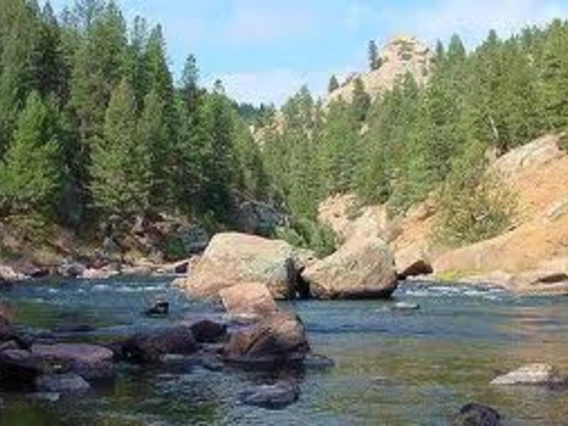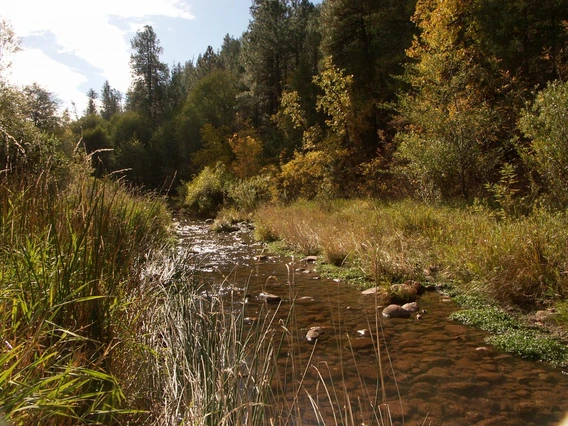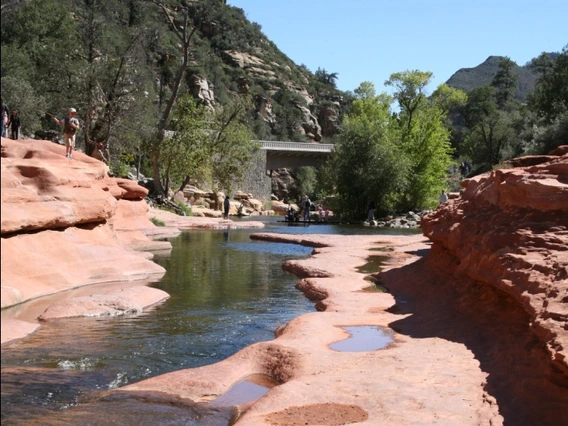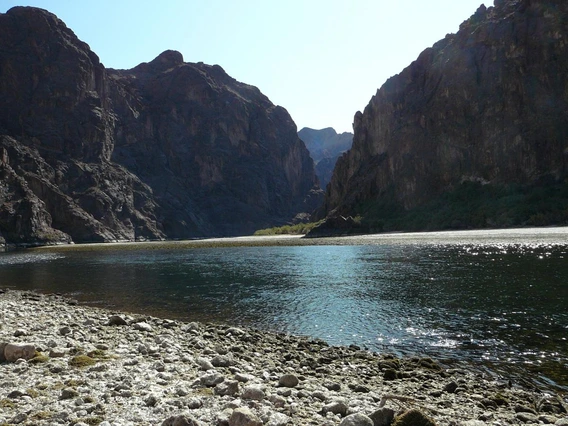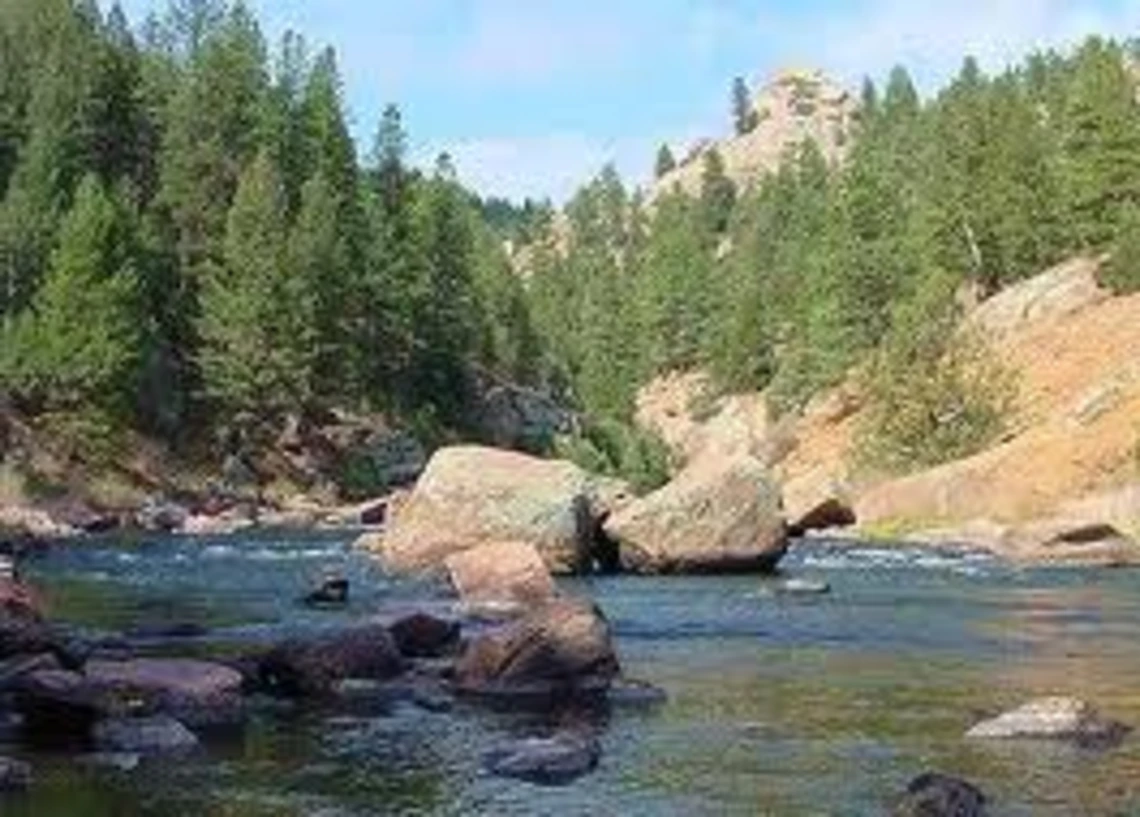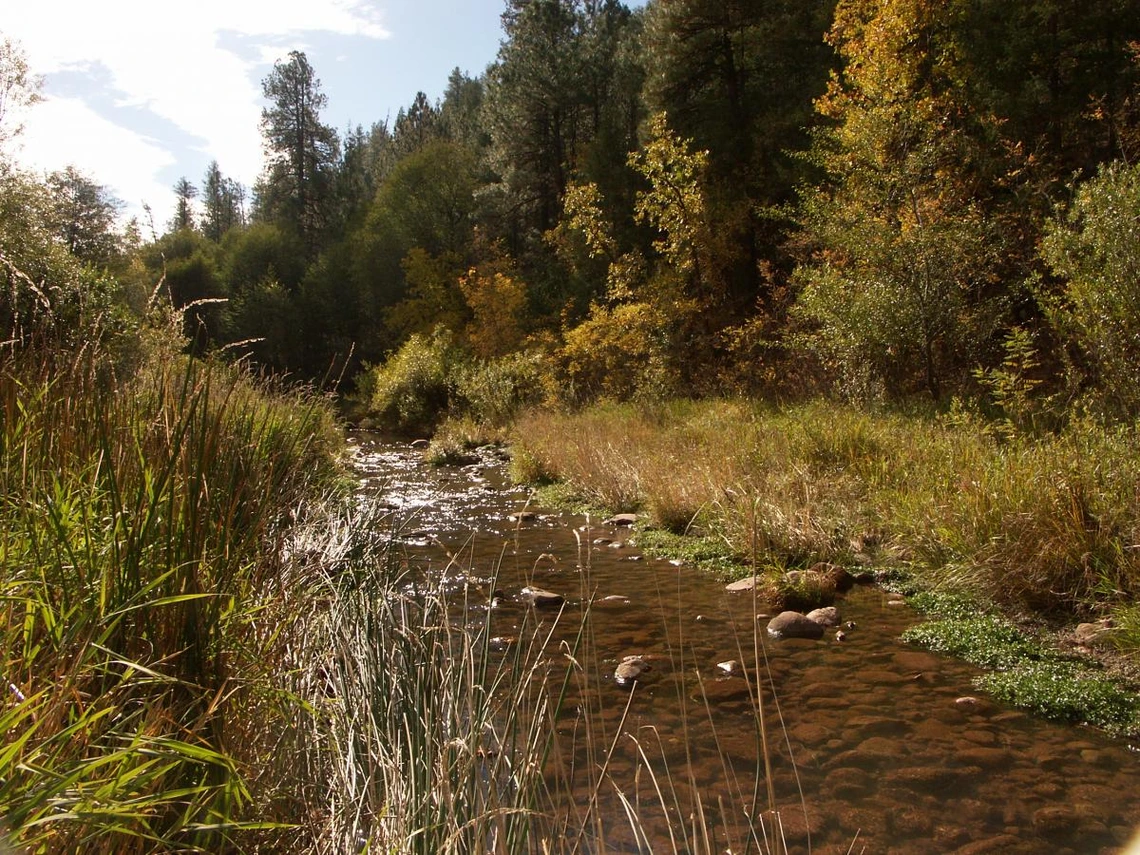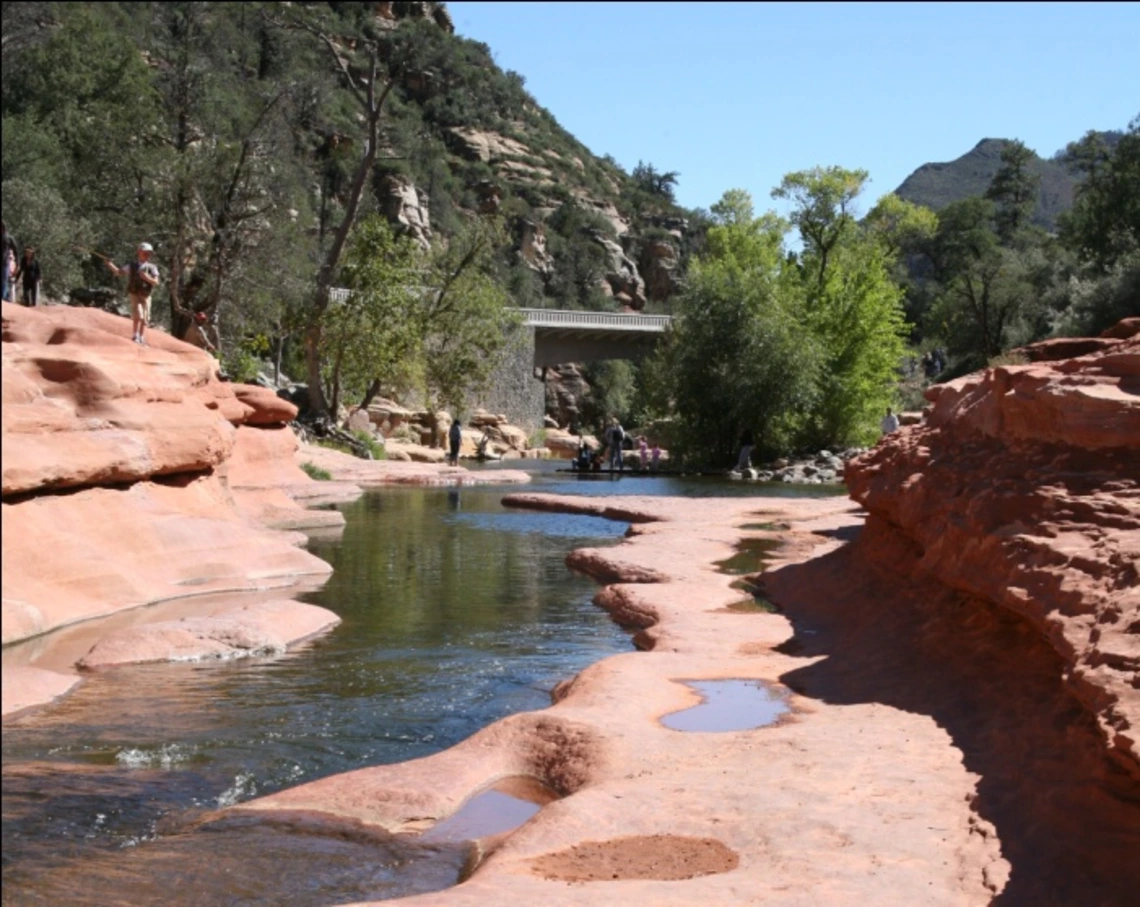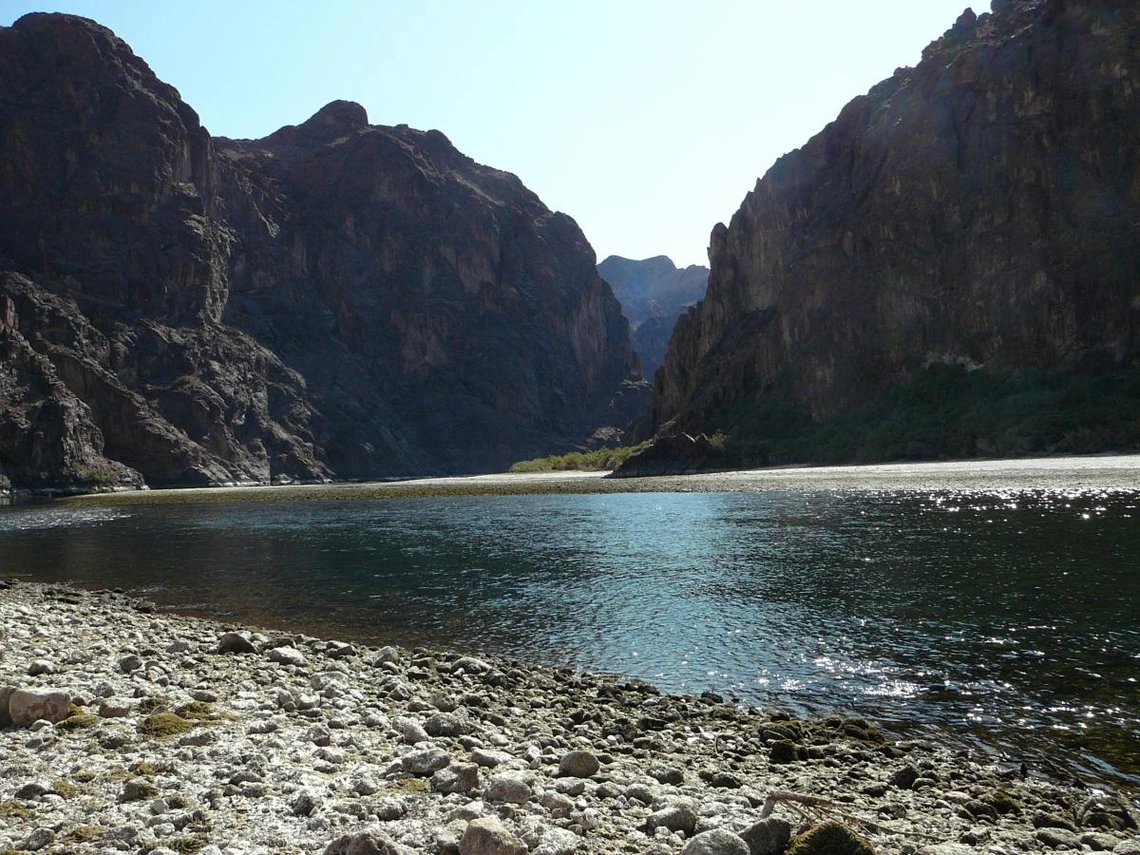Environmental Water Needs
Defining environmental water needs is a critical step toward securing water for environmental flows. Considering environmental water needs alongside human demands is an emerging paradigm in water policy. The science of environmental water needs is ever growing and evolving.
For this project, the WRRC set out to answer the following question: How much water does Arizona’s environment need? We found that choosing an answer to that question depends heavily on one’s perspective. Ecology and hydrology experts point out that all rivers were committed to various functions before humans began withdrawing water from the system. Arizona’s native animals and plants are adapted to the flow patterns present for hundreds of years. According to this historical perspective, the environment can use all of the water. However, under a more pragmatic approach, established human uses of water cannot be simply eliminated, but should be balanced with the competing demands of the environment.
Visit the Connecting Environmental Water Needs to Arizona Water Planning (EnWaP) project page for updated information on the science of environmental water demands in Arizona.
Publications and Resources
- The Arizona Environmental Water Needs Assessment Report (AzEWNA) is a compendium of all known research about the water needed to sustain riparian and aquatic flora and fauna in Arizona Rivers.
- The Arizona Environmental Water Needs Methodology Guidebook is a companion to the AzEWNA Report. It catalogs the methodologies used in the research studies reviewed. It is intended to put the studies into proper context, and to guide users in appropriate application of the results.
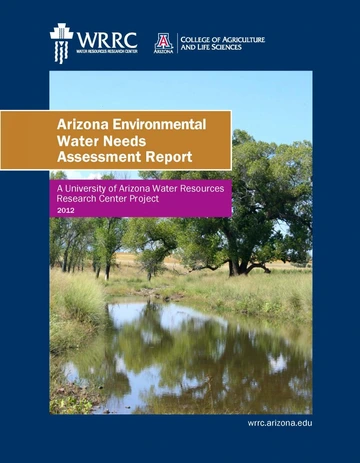
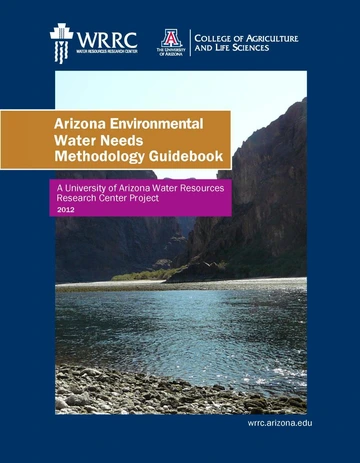
Inside the Report
These documents assist in ongoing efforts to quantify Arizona’s environmental water needs with resources to inform water management and planning. The Report and Methodology Guidebook contain:
- A compilation of 93 Arizona e‐flow studies including information about:
- Study methodology
- Study location
- Taxa (groups of species) observed
- Study findings
- Information gaps
- An evaluation of e‐flow research methodology, including suggested application of uses for the 23 distinct procedures.
- A decision tree to help identify appropriate methods for future e‐flow studies, with guiding questions such as:
- What is the hydrological context?
- What are the management goals?
- Is quantitative or qualitative information needed?
- What resources are available to the study?
- Recommendations for future research and analysis.
Looking Forward
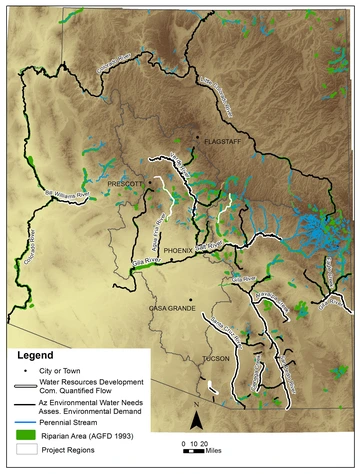
The Arizona Environmental Water Needs Assessment Report and Guidebook systematically assemble technical information about the environment’s water needs, and can be used in water planning and policymaking statewide. Efforts, like those of the Water Resources Development Commission (WRDC) to look at water demands statewide, provide opportunities for introducing the environment’s water needs into a dialog with all water sectors. Ultimately, the aim of the AzEWNA is to support the efforts of those working to conserve desert rivers and streams.
The Assessment Report identifies several challenges and opportunities:
Challenges –
- Location- and species‐specific information on necessary water supply for native ecosystems is available. Applying findings across the region is difficult. Because environmental water needs information is patchy, some areas with limited data are at a distinct disadvantage when considering the environment in water planning.
- Flow requirements for entire ecosystems are not well understood. Defining water needs for a few taxa may not represent water needed for system‐wide health and for conditions necessary to long‐term survival of all native species.
Opportunities –
- Findings about depth to groundwater or flow velocity requirements of certain species may be transferable across river systems in the state. This information may be particularly useful in those basins that lack information about environmental water needs.
- Arizona researchers have a depth of knowledge on a wide variety of methodologies to study environmental water needs.
Additional Resources:
Environmental Water Demands Database
Spatial and tabular database of 111 published studies conducted throughout Arizona between 1990 and July 2013. Information is available for the flow needs and responses to flow alteration of 100+ aquatic and riparian species found in Arizona.
Connecting Environmental Water Needs to Arizona Water Planning (EnWaP)
EnWaP is the WRRC's program working to bring information from the AzEWNA into water management and planning.
Arizona Environmental Water Needs Assessment Report
The 2012 edition with revisions of errata.
Arizona Environmental Water Needs Methodology Guidebook
A companion to the Assessment Report.
Calculating and Considering Environmental Water Demand for Arizona
A white paper by the WRRC summarizing environmental demand from both a science and policy perspective.
The Water Resources Development Commission (WRDC) Report
The WRDC was one of the first statewide water planning efforts to consider the needs of the environment.
Contact Us
Hard copies of the Arizona Environmental Water Needs Assessment and Methodology Guidebook are available by request.


